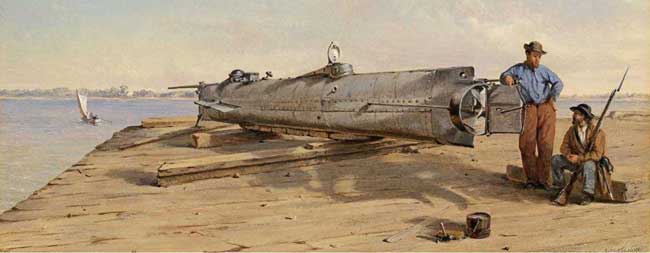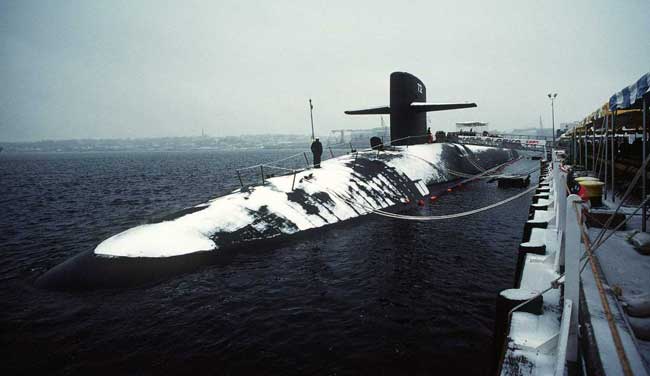It was 150 years ago today that the confederate submarine, the CSA H.L. Hunley, named after her inventor, Horace Lawson Hunley, attacked and sank the USS Housatonic in Charlestown's harbor on February 17th, 1864. That act, placed the occasion with the Hunley into the history books as the first sinking of a ship via submarine.
Lieutenant George E. Dixon, and a crew of seven volunteers set out aboard the H.L. Hunley on February 17th to sink the USS Housatonic, the Union’s largest ship, which was sitting at the entrance to Charleston Harbor. They approached the steam-powered ship that was equipped with 12 cannon, and rammed a barbed, 135-pound explosive into the hull of the ship. They found their way to the Union craft by cranking a hand crank that powered the submarine’s propellor.
 The barbed explosive was set into the vessel by ramming the ship and setting the charge into the hull of the target.
The barbed explosive was set into the vessel by ramming the ship and setting the charge into the hull of the target.
The barbed explosive harpoon was set to explode after the sub, which traveled only semi-submerged, backed away, triggering the harpoon by a 150-foot lanyard, set to explode when the line held by the submarine, drew taut. The Hunley was successful in its mission, but sunk during the execution of it.
It is unknown if the Hunley sank from the shockwave of the explosion, or suffered further developments after the successful attack, but, the Hunley was found to the seaward side of its target in 1995. The confederate sub was recovered in 2000. A closer look at the artifacts recovered after the Hunley retrieval suggest that the sub was within 20 feet of the explosion that resulted by the Hunley setting its charges 150 years ago.
 The Hunley was not a bug-free underwater craft to be sure. Prior to its misson that placed it into the history books, it sank on two other occasions. The Hunley sank for its first time in 1863, within a month of completion of its construction, killing five members of her crew. She would sink again, three months after her first sinking, this time killing eight, including the inventor himself.
The Hunley was not a bug-free underwater craft to be sure. Prior to its misson that placed it into the history books, it sank on two other occasions. The Hunley sank for its first time in 1863, within a month of completion of its construction, killing five members of her crew. She would sink again, three months after her first sinking, this time killing eight, including the inventor himself.
There are no official records of the crew on that fateful night, but one of the crew has been identified through DNA. That person is Joseph Ridgaway. Ridgaway was the second in command of the vessel and responsible for securing the aft hatch and operation of the seventh crank that propelled the craft.
Ridgaways remains were found with a slouch hat, an id tag with the name Ezra Chamberlain, a Union soldier who died at the battle of Morris Island a year prior, a wooden pipe, and a pencil.
DNA testing show that Chamberlain’s sister has decendants that live to this day.








